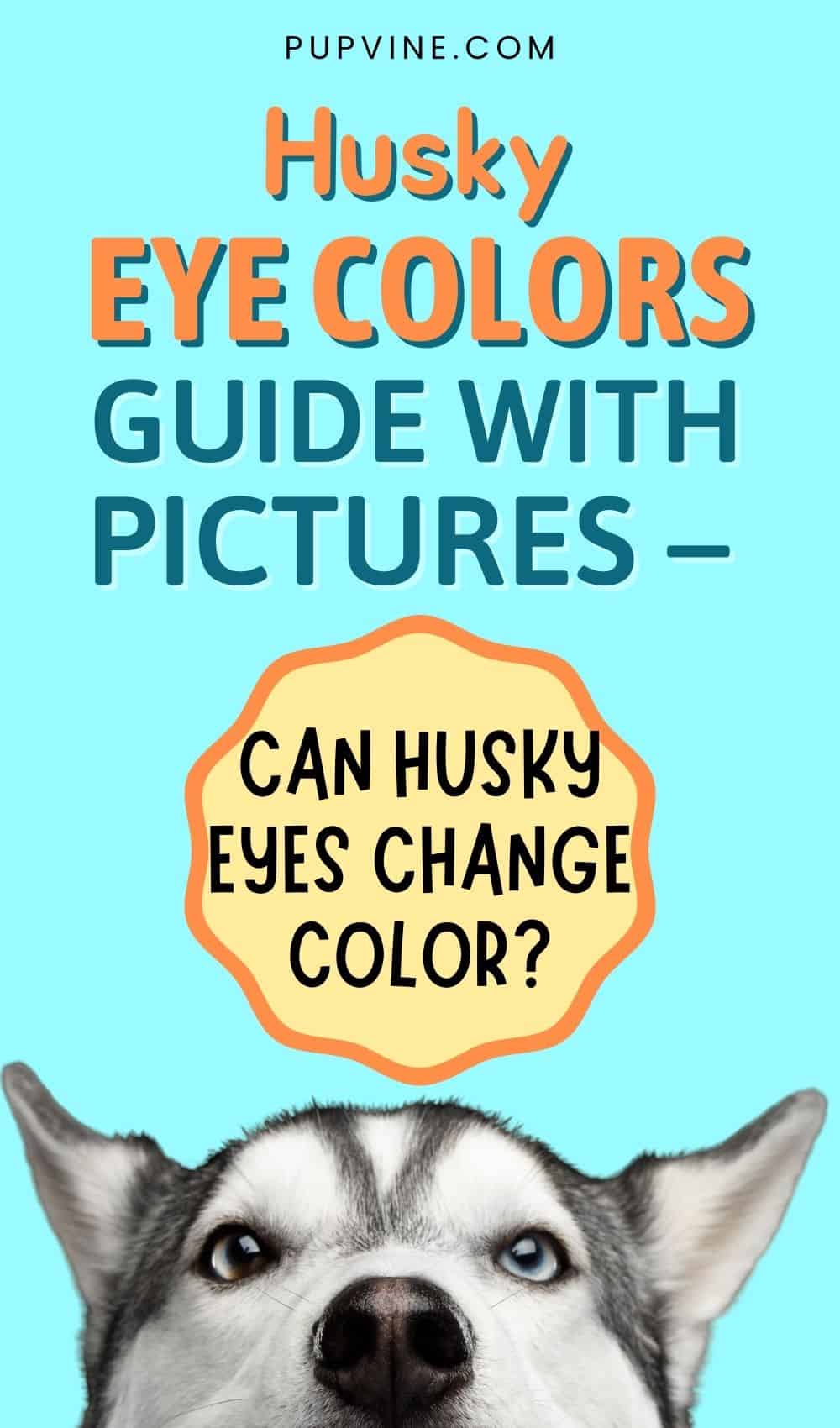Everyone knows what a Siberian Husky looks like! These gorgeous snow dogs have only become more popular after movies such as Call of the Wild and Togo.
Huskies are loved because of their wolf-like appearance, goofy, yet loyal personality, determination of a working dog, and unique eye colors that many people think are photoshopped. Once dog owners find out that these eyes are real, they become quite fascinated with them.
The most common Husky eye colors are blue and brown, but since heterochromia is common in these dogs, it isn’t rare to see parti-colored or bi-colored eyes as well.
This is one of the main features that make them stand out from other popular breeds of dogs, such as German Shepherds or Poodles.
If you’re amazed at Siberian Husky eye colors, then this article is for you! We will explain the genetics behind the Husky eye colors, and name some of the more unusual color combinations that exist.
We’ll also talk about some genetic disorders that may affect the eye color of this breed. No matter whether becoming a Husky owner is something that interests you or not, you’ll find this guide interesting.
Let’s begin!
Husky Eye Color Genetics
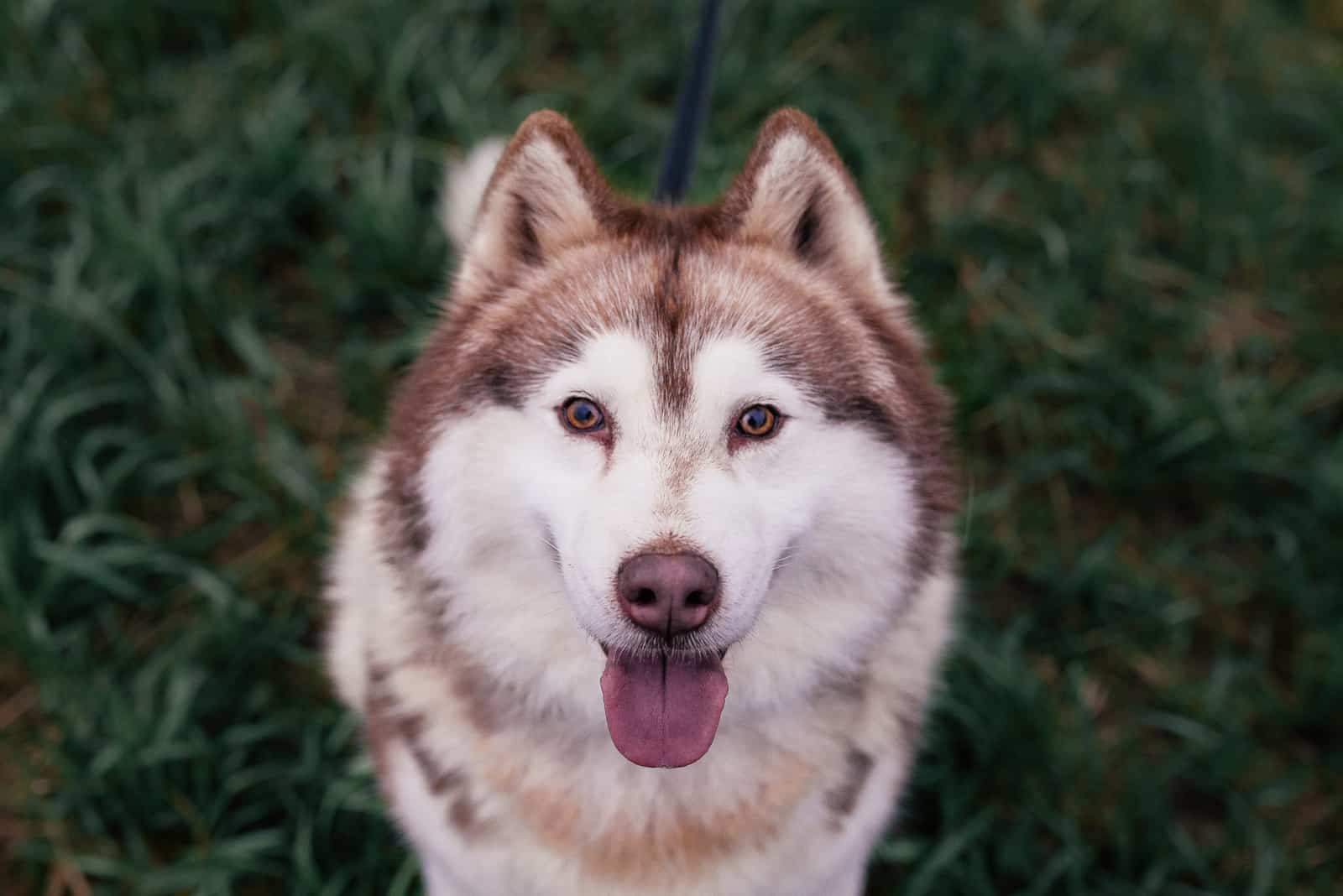
If you’ve noticed that a Husky has two colored eyes, you may wonder if something’s wrong with the pup’s sight. However, this is perfectly normal, and bi-eyed Huskies are a regular sight.
The reason behind the unique Husky eye colors is a condition called heterochromia. This condition is caused by a melanin deficiency in the eyes, which is responsible for altered iris color.
Heterochromia is not dangerous in any way, shape, or form. It only affects the pigmentation and not the eyesight. Also, it is not the result of crossbreeding, and Huskies with two eyes of a different color are just as purebred as Huskies with blue or brown eyes.
Some dog lovers have claimed that heterochromia makes the eyes more sensitive, especially when it comes to the UV damage that comes from the sun. However, scientists, such as the famous Adam Boyko, debunked this and proved that heterochromia doesn’t influence a dog’s sight whatsoever.
Huskies aren’t the only dog breed that commonly has heterochromia. Many other canines have this genetic mutation, such as Australian Shepherds, Border Collies, Cardigan Welsh Corgis, and so on.
Siberian Husky Eyes In Different Colors (With Pictures)
Other than by their unique color pattern, Huskies are easily recognized by their almond-shaped eyes. As we’ve already mentioned, there are several different Husky eye colors. Of course, if a dog is mixed, such as is the case with a Husky Pug mix, a Husky Corgi mix, or a German Shepherd Husky mix, these colors might be different. However, even purebred Huskies can have eyes in a variety of colors.
Here are all of them!
Brown Eyes

Brown is a standard Husky eye color that is recognized by the American Kennel Club (AKC). This is a dominant eye color that is one of the most common colors in this dog breed.
The brown Husky eyes can come in several shades. You can see them in anything between a rich dark brown and more hazel or amber-toned.
In fact, many dog owners confuse this eye color with black, especially when their Husky dog’s pupils are dilated and blend with the dark iris color. However, Huskies don’t have black eyes – only light or dark brown.
Blue Eyes
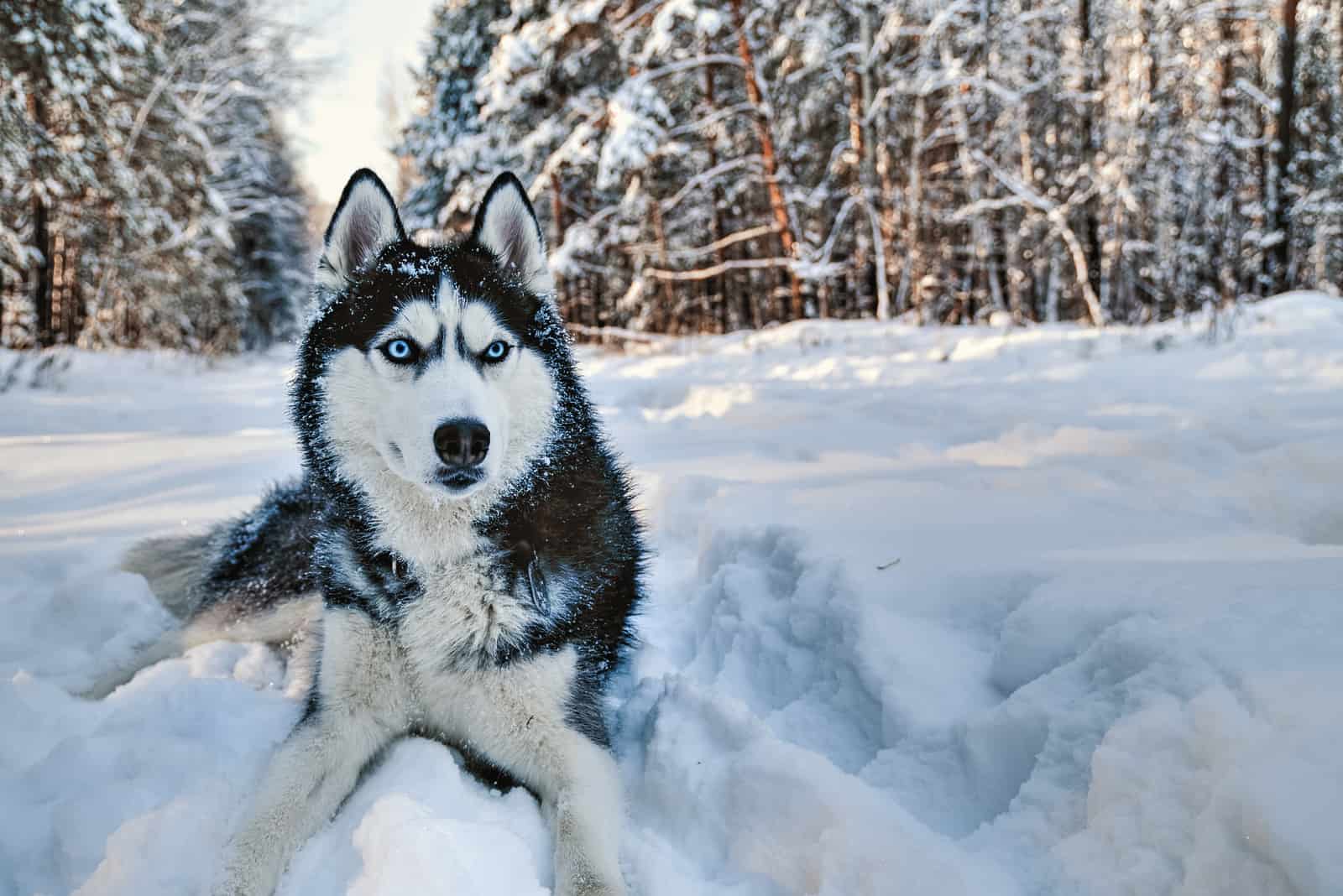
Blue is yet another Husky eye color that falls under the AKC’s breed standard. While not as common as brown eyes, it is still usual for this breed, and most people imagine blue-eyed Huskies when they think about this breed.
Blue eyes weren’t always natural in Huskies. In fact, researchers found that a mutation near a specific gene, called an ALX4 gene, made Siberian Huskies come with eyes in blue color.
The intensity of the blue color can vary greatly from dog to dog. While some are deep blue or very dark blue, others are as light as an icy blue shade. This might make a Husky owner think their dog has white or grey eyes – but they are simply in a very light shade of blue.
Huskies are different from many other blue-eyed dog breeds by sporting a noticeable ring of black fur and skin as an eye outline. This makes Huskies look like they have very bright blue eyes; bluer than most other breeds.
This dark ring isn’t just there for the aesthetics – it helps Huskies deflect the bright light from the sun, the snow glare, or any other light reflection that might affect their sight.
Blue eye color is the result of recessive genes. It isn’t uncommon for two brown-eyed Husky parents to have blue-eyed offspring, which might confuse many inexperienced dog breeders.
Green Eyes

Green eye color is not included in the AKC’s breed standard for these Alaskan dogs. In fact, they are very rare, and this shade is not usual in this dog breed. Even the genetics behind it isn’t well-known!
Green eye color is actually common in puppies when their milky blue eyes are transitioning into brown. Some people believe that green-eyed Huskies never completed this transition, which is why they have irises of this color, resembling puppy’s eyes.
However, as of now, there is no proof behind this or any other theory regarding the genetics of green Husky eye color.
Siberian Husky Eyes of Different Colors (With Pictures)
We’ve covered the basic colors of a Huskies’ eyes. Now, let’s go over the eye colors and combinations in Huskies affected by heterochromia.
Bi-Eyed
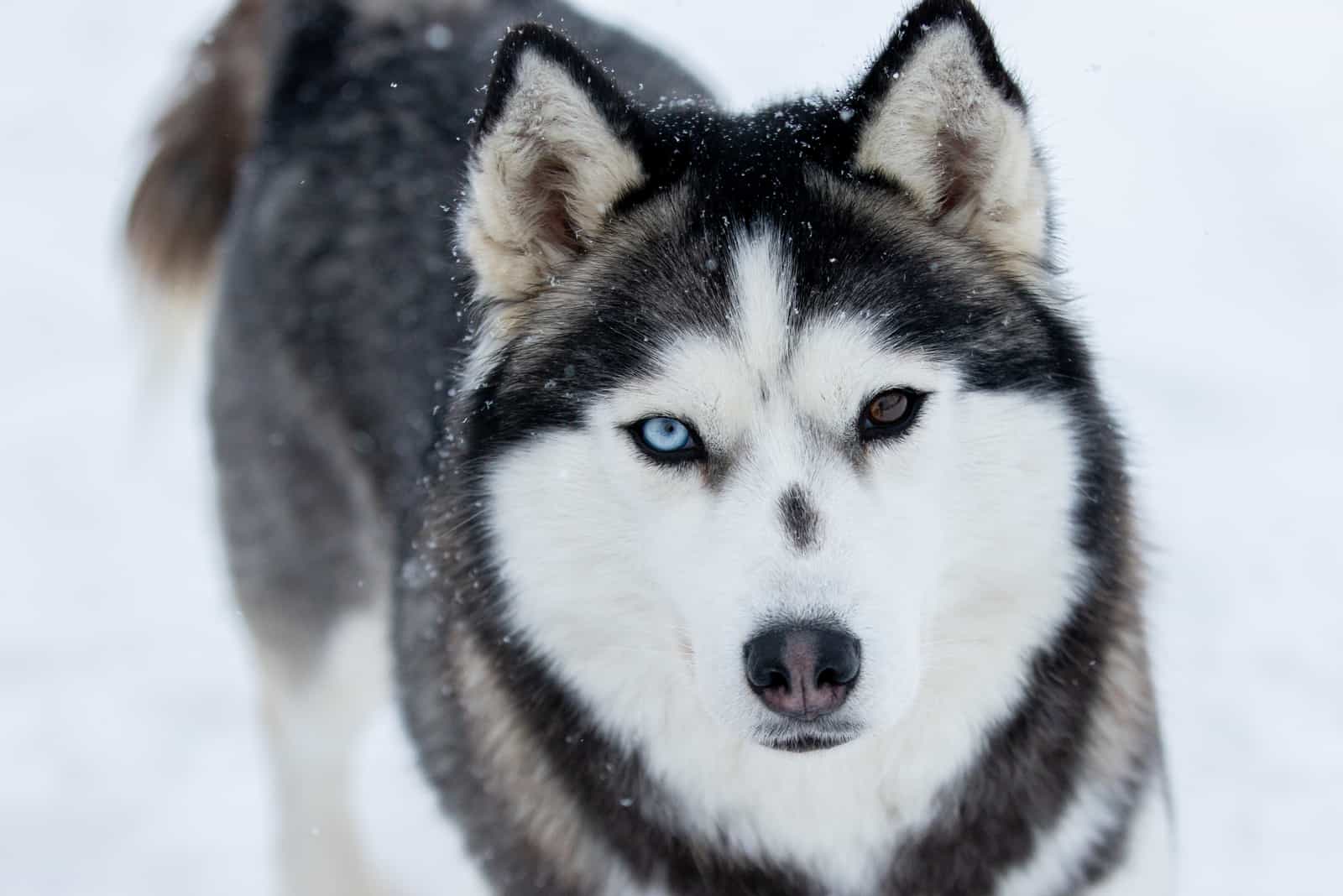
This is a common eye color – or rather, color combination – in Siberian Huskies. Bi-eyed Huskies have both eyes of different colors. While one eye can be in any shade of blue, the other can be anything between light brown and almost black.
Blue and brown is the most common combination in bi-eyed Huskies. However, these pups can have eyes of any other color, including green and blue or green and brown. Still, since green eyes are uncommon, these combinations are rare as well.
As we’ve mentioned before, bi-eyed Huskies are perfectly normal, and heterochromia doesn’t affect their eyesight. Also, bi-eyed Huskies are recognized by the AKC – as long as their eyes are brown and blue and not green.
Parti-Colored
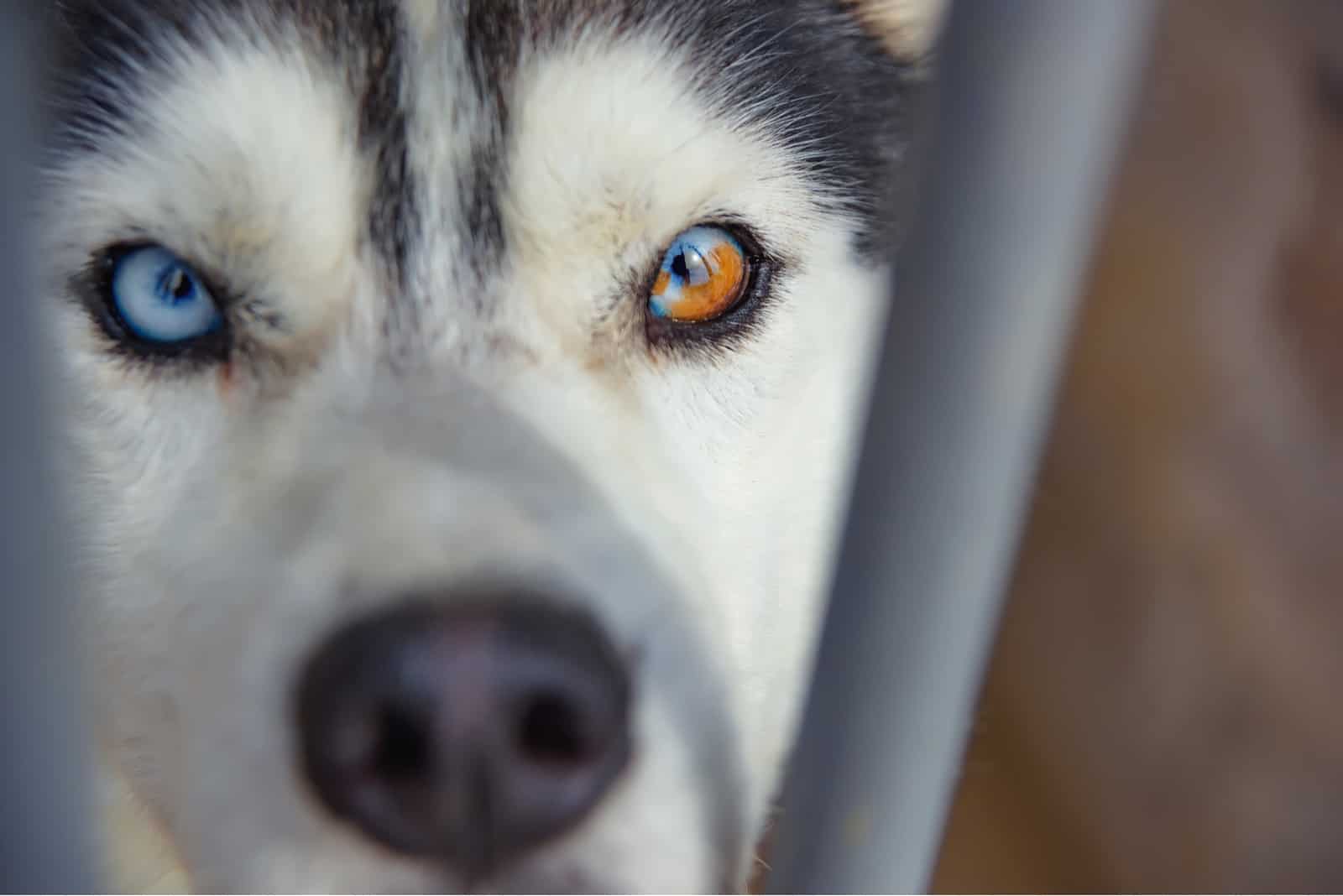
Around 5% of Huskies have parti-colored eyes. This means that one eye has two different eye colors.
This color combination is caused by sectoral heterochromia; a genetic mutation that affects only a part of a single eye’s iris.
The usual combination is, once again, a blue and brown colored eye, and the different colored spot is usually blended close to the side of the eye.
Many merle or mixed breed dogs have parti-colored eyes, but this isn’t the case with Huskies. They can be purebred in the standard coat color and still have oddly colored eyes. Their genetics are simply made differently than those of other dog breeds.
What Is The Rarest Husky Color?
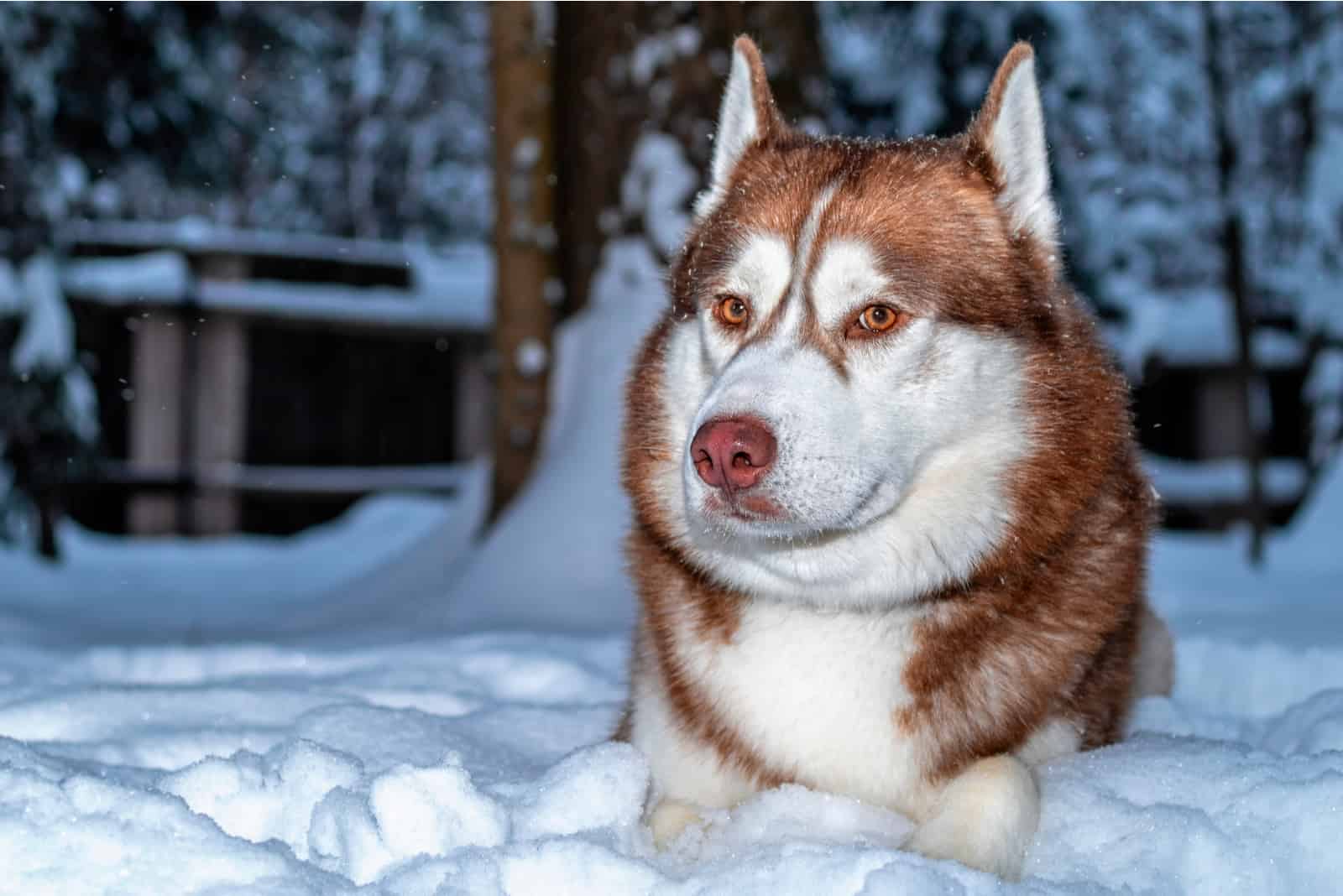
Some people claim that a very small percentage of Huskies have red eyes and that this is the rarest Husky color. However, this simply isn’t true, and Huskies can’t have red eyes.
While a Husky’s eyes might appear red from time to time, this is simply a brown eye color with a warm tint that might appear red in a certain light. Also, you may see red blood cells in some Huskies with light blue eye color, giving them a red tint when they look directly at light.
If you are certain your Husky has red eyes, then take him to the vet as this might be a sign of some health problem – but more on that later.
Once we’ve ruled that out, we can say that the rarest Husky eye color is green. In fact, this is the only color that isn’t recognized by the AKC. This includes the cases when only one eye color is in this color.
Does Husky Eye Color Change Over Time?
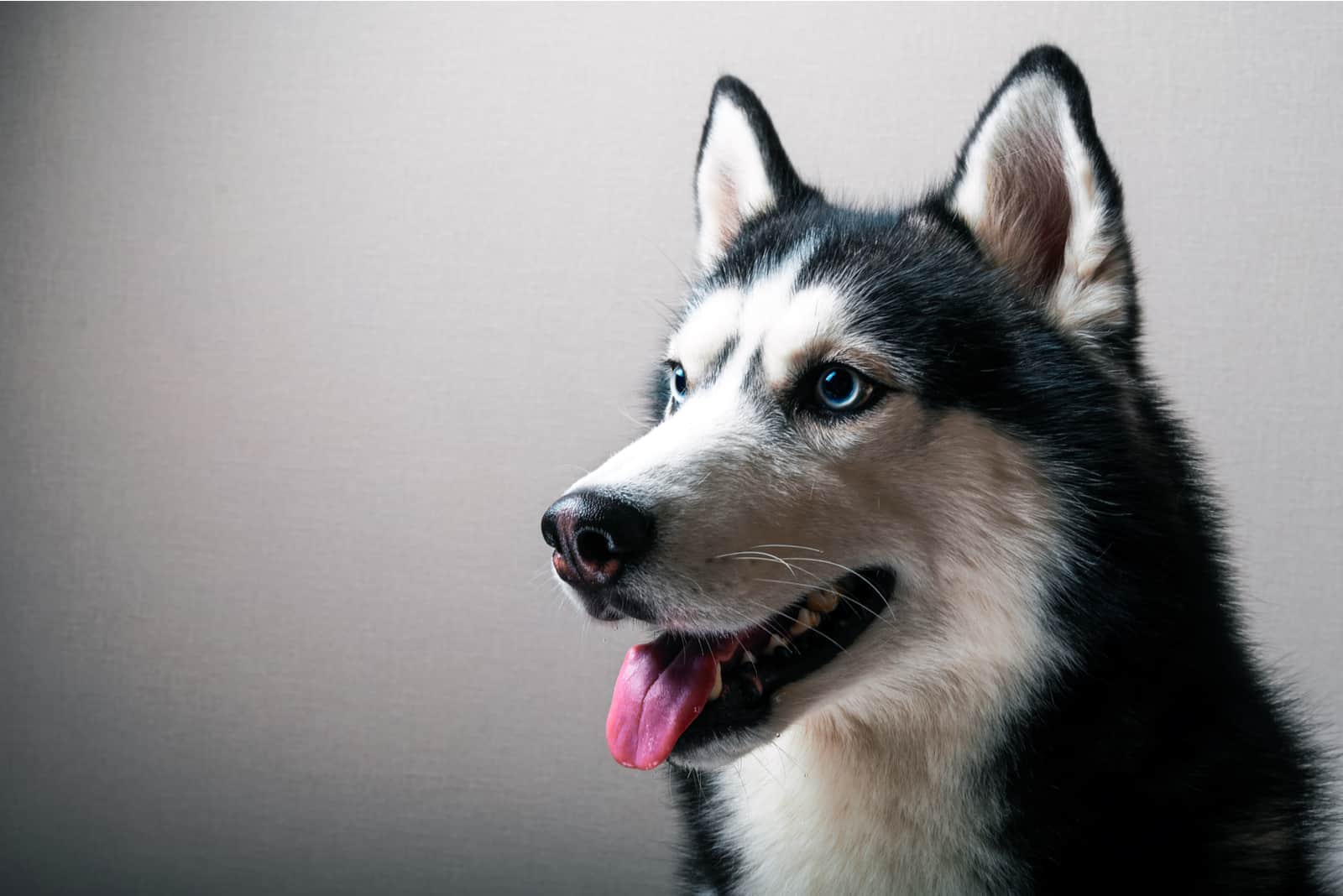
All canines experience a change of their eye color as they mature. Most puppies have bright blue eyes that later transform into the color they are supposed to be. This color depends on genetics that affects the melanin distribution.
Blue and brown eyes are standard Husky eye colors. When a puppy’s blue eyes change to brown, they become green for a short while. Rarely, the eyes won’t complete the transition and will remain green.
This transition usually begins when puppies are between five and eight weeks old, and the final color becomes visible when they are around 12 to 16 weeks of age. Keep in mind that the shade might still change until the pup is six months old.
If the eyes change color when your dog is older than six months, you should take it to the vet as this might indicate some health problem.
To ensure your pup is healthy, make sure you give him enough exercise. Huskies are active dogs, and daily walks are necessary to make sure they are in a healthy condition.
Also, feed them only high-quality dog foods. Replace some treats with healthy alternatives, such as fig newtons or paprika. Consult your vet about adding tuna or fish sticks to his diet, as well.
Determining Husky Eye Color
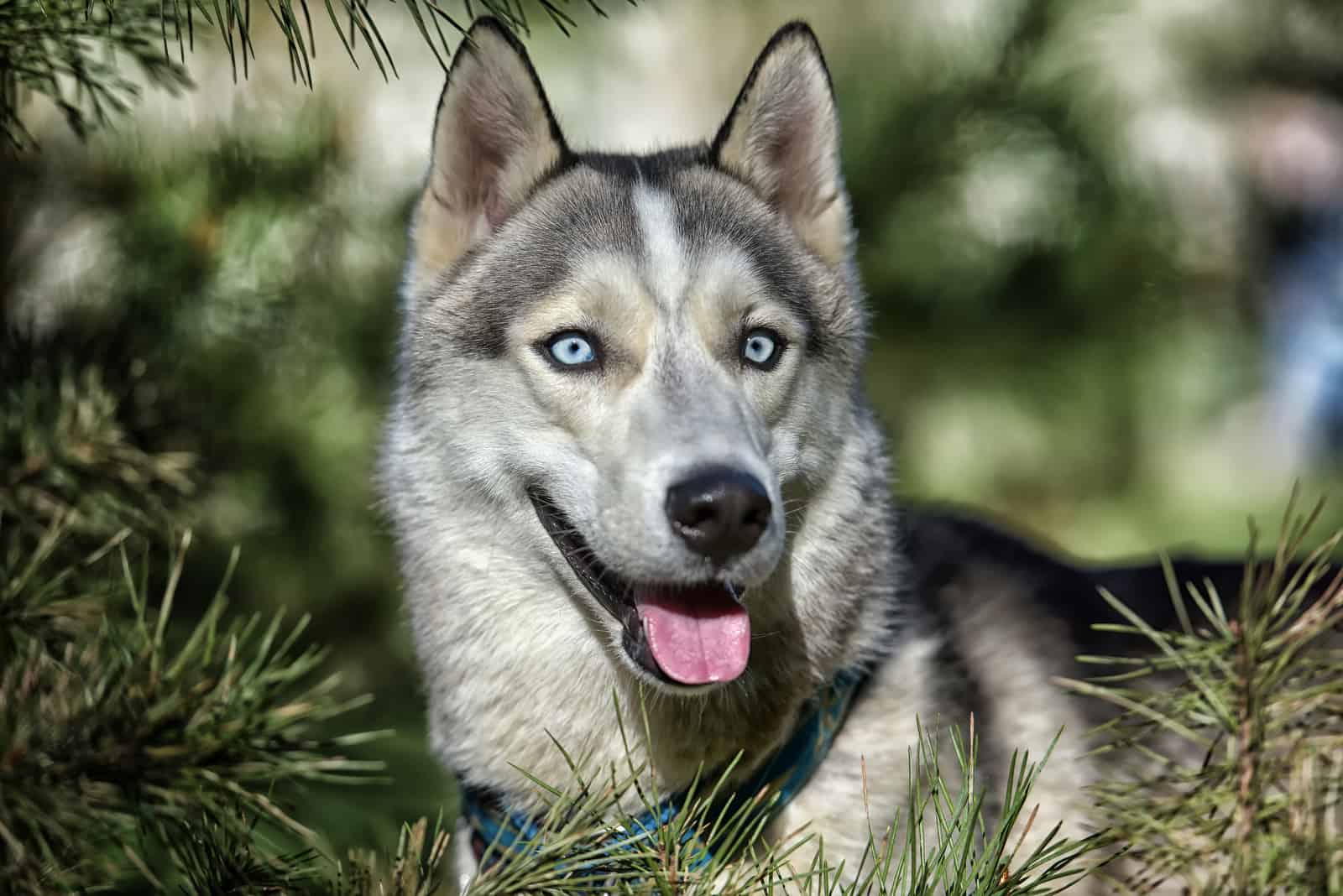
If you want to get a Husky puppy, but want to get a specific eye color, then there are a few tips and tricks that might help you determine them. However, keep in mind that predicting the color of a dog’s eyes can be quite tricky. You can never be 100% certain until the dog matures.
First off, it would be best to wait until the pup is at least eight weeks old before looking at its eye color. This is the time when the shade starts transitioning. Before that, most dogs will have bright blue eyes, so you might end up disappointed.
Don’t use a flashlight to check out the exact shade. Instead, take the pup outside and look at it under natural light. Sunlight can make the real tint of the iris show itself, so you can easily see if this color is brown, blue, or even bi-eyed!
Talk to the breeder as they are most likely more experienced than you. Also, they can know the parent’s eye colors, which can also help – but this is not a guarantee as blue eyes are recessive and can remain hidden for generations.
Common Eye Problems In Huskies
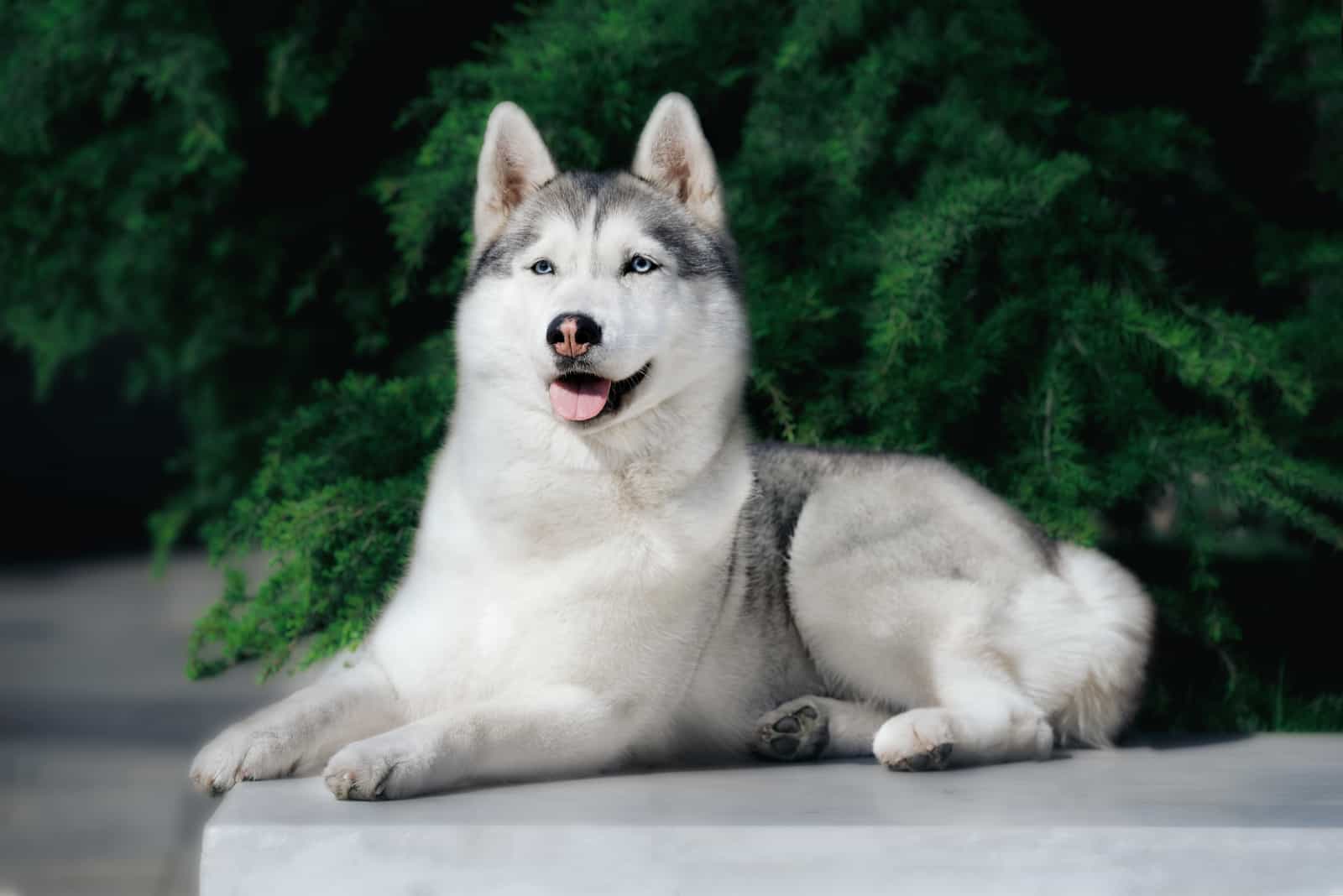
Regardless of their eye color, Huskies are prone to several health problems that affect their eyes. Sometimes, this might also cause their eye color to change or become red.
Since most eye disorders are hereditary, it would be wise to conduct several DNA tests on your pup. Both the breeder and the veterinarian can help you do this. In fact, dogs with genetic eye issues should not be further reproduced.
Here are some of the most common eye problems in Huskies you should be aware of:
Juvenile Cataracts
Juvenile cataracts are not the same disorder as cataracts that affect old dogs. This is a hereditary disease that is manifested in Huskies as young as three months.
Cataracts create opacity in the retina. The eye lens’s function is to focus light rays and turn them into an image with the retina’s help. With cataracts, the opacity in the retina prevents it from receiving the light rays, causing blurred vision.
Typically, cataracts are located in the lenses’ posterior region. They are caused by a recessive gene, so two seemingly healthy dogs might birth a puppy with this condition.
If cataracts are diagnosed early, they can be kept under control with eye drops and mild medication. Otherwise, surgery might be necessary.
Even if cataracts are diagnosed late, you don’t have to panic. Huskies can rely on their sense of smell and hearing, so even if cataracts make them blind, they’ll still be able to live a long and painless life.
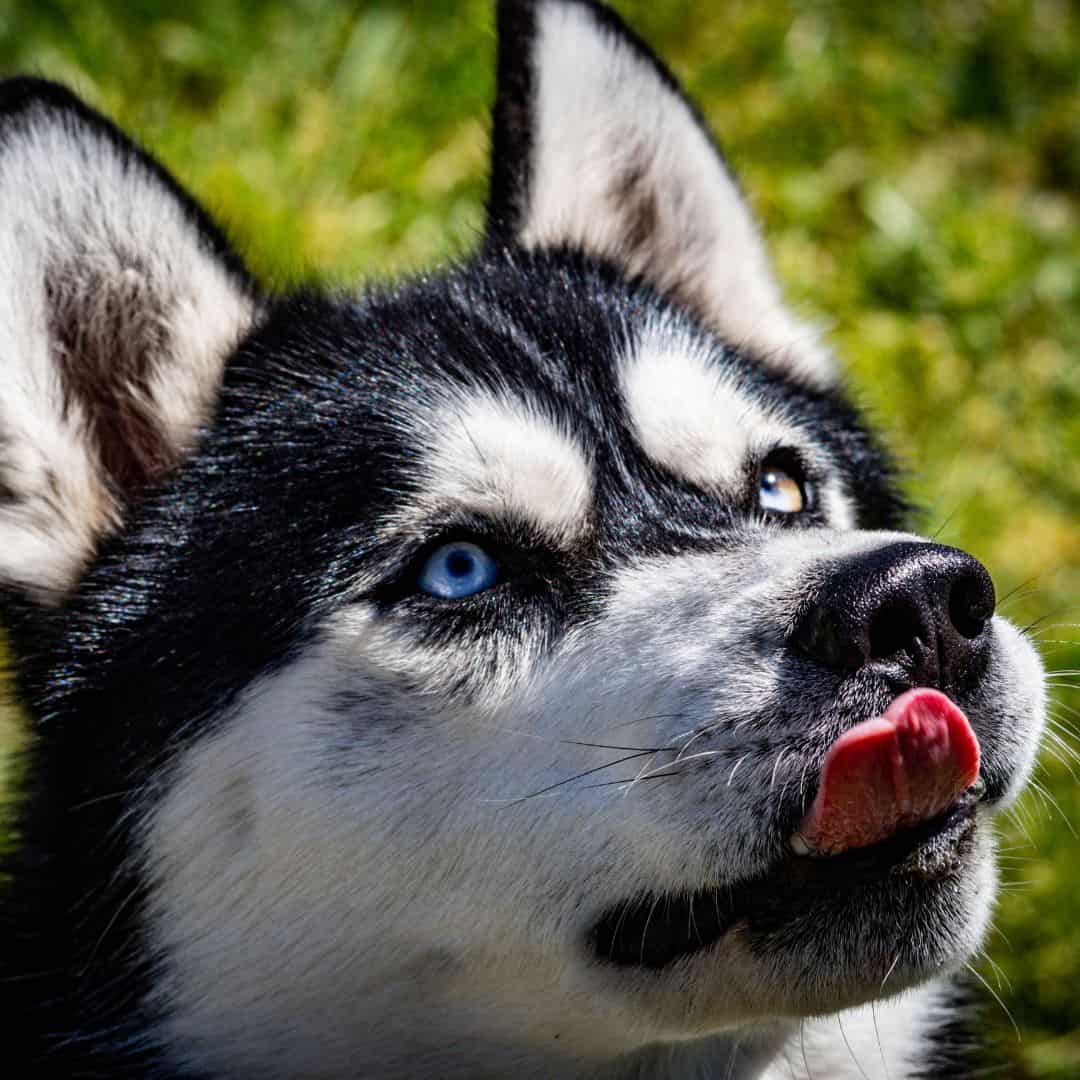
Photo from @imhuskyfan
Corneal Dystrophy
This disorder targets the outer transparent part of the dog’s eyeball, also known as the cornea.
Corneal dystrophy is similar to cataracts in the sense that it turns the Husky’s eye opaque or hazy by collecting lipids in the cornea. Young female Huskies are especially prone to this condition.
Just as cataracts, corneal dystrophy is also caused by a recessive gene. However, most of the time, it won’t affect a dog’s sight.
Still, vet visits are recommended as this condition can lead to corneal ulceration, which is a much more severe disorder that might make your Husky blind.
Progressive Retinal Atrophy
Progressive Retinal Atrophy (PRA) is the most severe of all common eye problems in Huskies. Dogs with this condition can lose their vision entirely when they are no older than five months.
PRA affects the retina; a part of the eye that contains two types of rod cells responsible for a dog’s sight. Once your pup develops this condition, he will first lose his night vision, and then it will slowly escalate until the dog is entirely blind.
The type of PRA in Huskies is inherited through the female XX chromosome, just as in humans. There is no effective treatment for it. The only way to prevent it is to get your dog from a reputable breeder who conducts all the necessary genetic tests.
Should You Worry If Your Husky Has Blue Eyes?
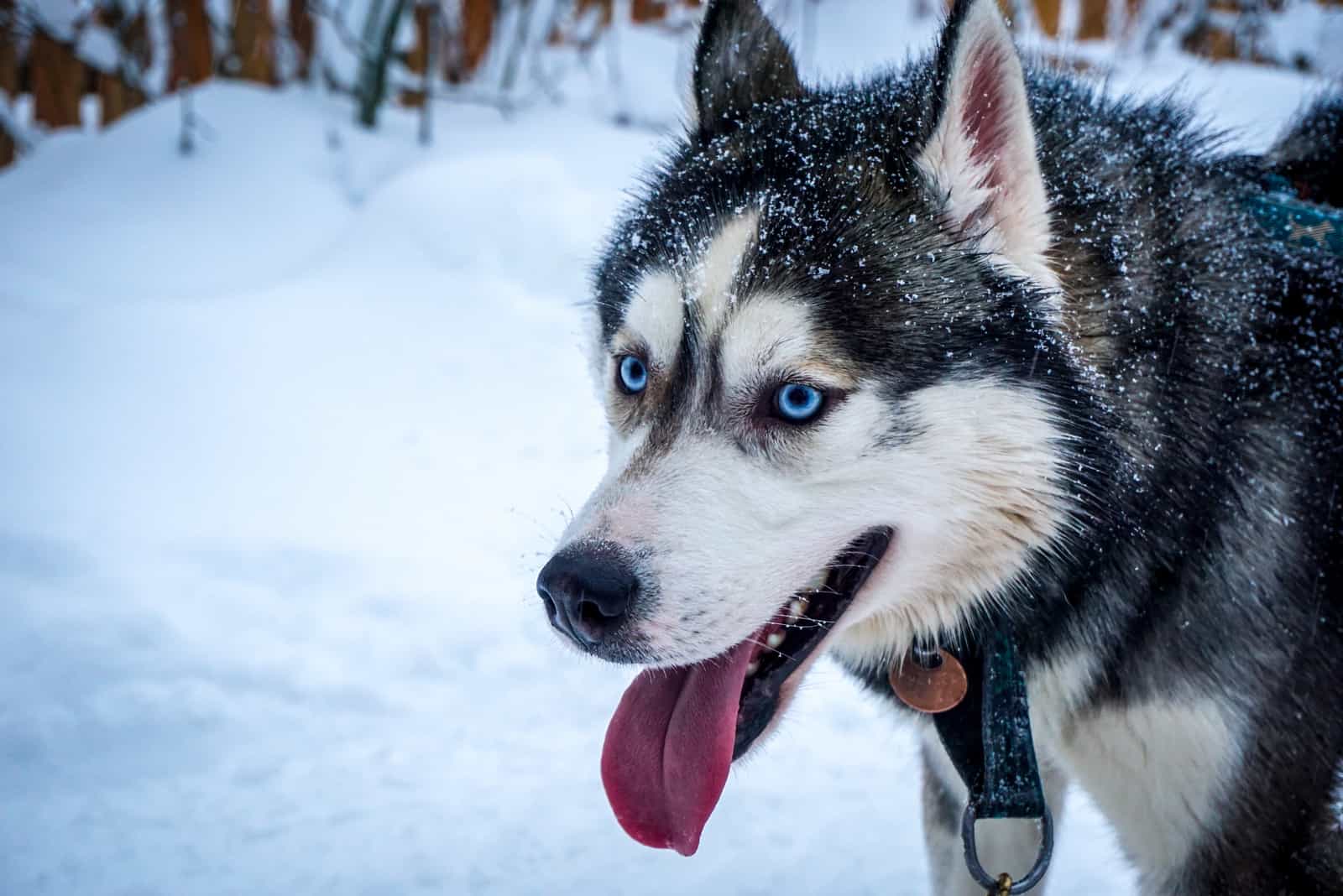
In many animals, blue eye color is connected with vision issues. For example, many merle and albino dogs have blue eyes that don’t function properly. These dogs can sometimes be entirely blind.
In Huskies, however, blue eyes are caused by an entirely different mutation. While in merle canines or canines suffering from albinism, the eye color is the result of a lack of pigment or a dilution gene. In Huskies, this is simply a different way that melanin is distributed.
So, if you have or plan to have a blue-eyed Husky, don’t worry. These dogs are no more prone to eye disorders than Huskies of any other color.
Also, blue eye color in Huskies isn’t connected to deafness in any way – whether both eyes are blue or if heterochromia is present.
Still, regardless of their eye color, Huskies are prone to several health problems, including many eye diseases. Because of this, it would be best to take your pup to an ophthalmologist regularly so you can rule out any genetic problems.
Siberian Huskies are gorgeous dogs no matter if they’re blue- or brown-eyed. A bi-eyed Husky is an especially gorgeous sight, so it’s no wonder that this Husky eye color is so popular!
Read Next: Dog Eye Color Chart: 7 Mesmerizing Shades

